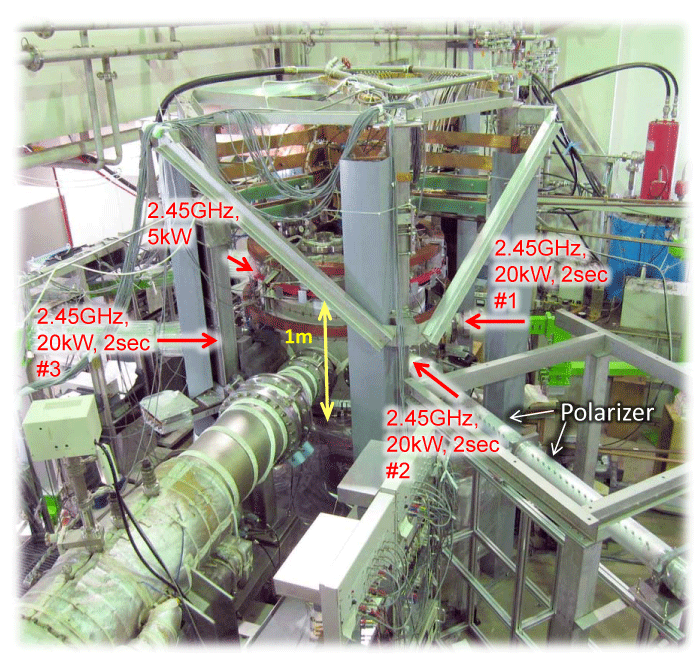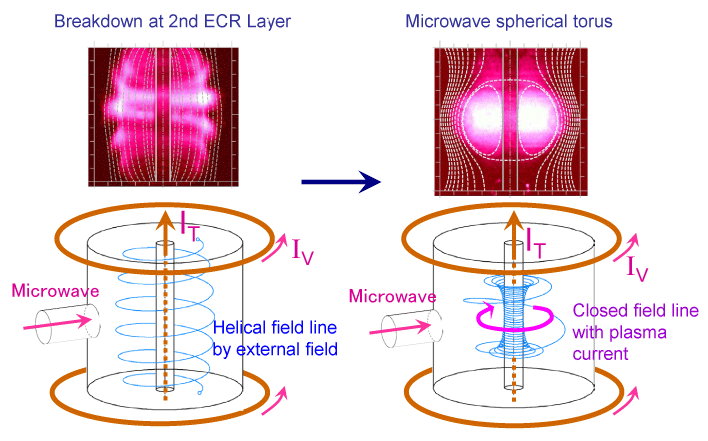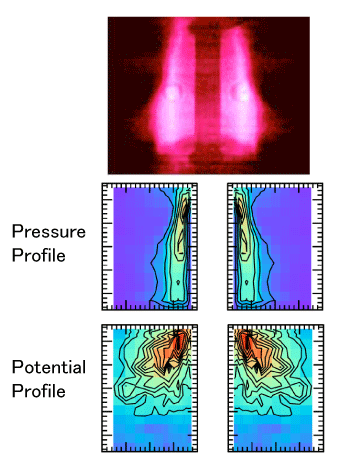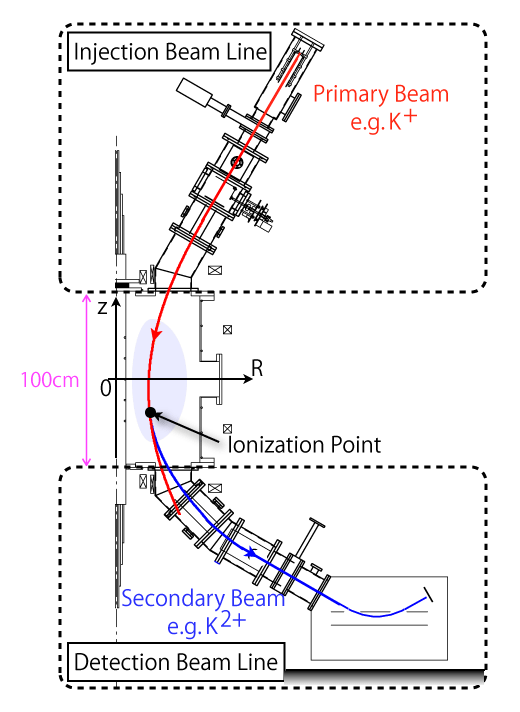Microwave Spherical Torus Experiment
The LATE group has succeeded in generation of microwave spherical torus where low aspect ratio torus plasmas are started up by solely microwave power at electron cyclotron range of frequency (the LATE device has no central solenoid). The currents are carried by EC driven energetic electron tail and reach up to 20 kA. In order to promote these experiments of microwave torus to lager devices for magnetic fusion the LATE group now concentrates on details of generation processes, including wave plasma physics, torus equilibrium characteristics, transport, etc. Various toroidal effects appear most prominently in low aspect ratio geometry.
[Nuclear Fusion: Lab Talk]

Formation of Microwave Spherical Torus
When a microwave power of 5GHz, 190kW is injected into the vacuum chamber under a steady helical field line of a vertical field (Bv = 70G) and a toroidal field (Bt = 960G), breakdown takes place immediately along the external helical field lines near the 2nd EC resonance layer (see the left figure below). After a while, plasma current jumps up to Ip ~ 7 kA under the steady Bv field, spontaneously forming an initial closed field structure [T. Yoshinaga et al. 2006 Phys. Rev. Lett. 96 125005]. After that, Ip ramps up as Bv is ramped-up and reaches 20kA at the end of microwave pulse, producing a low aspect ratio torus (the right figure). [M. Uchida et al. 2010 Phys. Rev. Lett. 104 065001]

Toroidal ECR Plasmas
In toroidal plasmas immersed in a toroidal field of B_phi, the electrons drift downward, while the ions drift upward due to the field gradient and curvature. The electrons that have reached the bottom wall return through the conducting vessel to the top, on which they recombine with the ions, completing the current circulation. This conjecture has been confirmed on electron cyclotron resonance (ECR) plasmas in the LATE device with current-collecting electrodes at the top and bottom of the vacuum chamber [S. Nishi et al. 2010 PPCF 52 125004, S. Nishi et al. 2010 PPCF 52 065011]. Upon the blocking of the external return path, the discharges terminates, showing that current circulation is vital to maintain the discharge. Detailed studies reveal the characteristics of current circulation and equilibrium. The electron pressure profile is a uniform vertical ridge along the ECR layer in accordance with the electron vertical drift current circulating via the external circuit, while an upwardly shifted potential hill arises, providing the ions E × B drift paths around the potential peak to the vicinity of the top electrode and also providing the electrons E x B drift path toward sideaway from vertical grad-B drift.

Heavy Ion Beam Probe (HIBP)
The space potential provides E x B drift, which may be also crucial in plasma transport and confinement in spherical torus plasmas. We can't employ Langmuir probes to measure the space potential in spherical torus plasmas. Now we are developing a heavy ion beam probe (HIBP) system on LATE.



